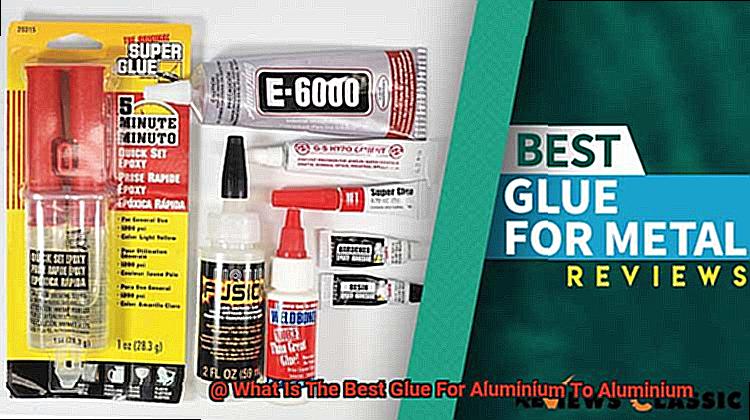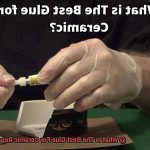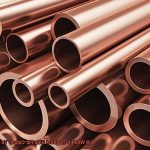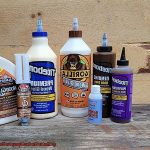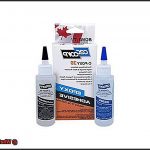Imagine this – you’ve stumbled upon a broken piece of aluminium that desperately needs fixing. As you dig through your toolbox, you’re faced with an overwhelming array of adhesive options, each claiming to be the perfect solution. Fear not, my fellow DIY enthusiasts, for we hold the key to your aluminium conundrum.
In the fast-paced world of adhesives, finding the best glue for aluminium to aluminium can feel like navigating a maze. With countless choices boasting similar properties, it’s easy to get lost in a sticky sea of possibilities. But worry not, as we embark on a journey to uncover the ultimate bonding agent that will revolutionize your aluminium projects.
This definitive guide takes us deep into the realm of glues specially crafted to create unyielding connections between aluminium surfaces. From aerospace marvels to automotive wonders, these resilient adhesives have been trusted by various industries for their ability to forge durable bonds that stand the test of time.
But what sets these specialized glues apart from the rest? We’ll unveil the science behind their superior performance, exploring their unique composition and properties that enable them to conquer the challenges posed by aluminium bonding. From withstanding scorching engine compartment temperatures to battling corrosion’s relentless assault, these top-notch adhesives offer an unbeatable solution for all your aluminium repairs.
So whether you’re a seasoned DIYer or an occasional handyman, this comprehensive guide equips you with the knowledge needed to choose the perfect adhesive for your aluminium projects. Say goodbye to feeble adhesives that crumble under pressure and say hello to an unbreakable bond worthy of aluminium’s strength.
Join us as we unravel the secrets of finding the best glue for aluminium to aluminium and unlock a world brimming with endless possibilities in the realm of repairing this remarkable metal.
Types of Glue for Bonding Aluminium to Aluminium
Contents
- 1 Types of Glue for Bonding Aluminium to Aluminium
- 2 Advantages and Disadvantages of Epoxy Adhesive
- 3 Benefits of Cyanoacrylate Adhesive (Super Glue)
- 4 Structural Adhesives for Bonding Aluminium to Aluminium
- 5 Surface Preparation for Bonding Aluminium to Aluminium
- 6 Factors to Consider When Choosing the Best Glue for Bonding Aluminium to Aluminium
- 7 Conclusion
When it comes to bonding aluminium to aluminium, selecting the right glue is crucial for achieving a robust and long-lasting bond. Luckily, there are various types of glues available in the market that are specifically designed for this purpose. Each type of glue possesses its own unique properties, advantages, and limitations. In this section, we will delve into the most common types of glues used for bonding aluminium to aluminium.
Epoxy Adhesives
Recognized as one of the top choices for bonding aluminium to aluminium, epoxy adhesives offer exceptional strength, durability, and resistance to chemicals and temperature fluctuations. Comprising two components – a resin and a hardener – epoxy adhesives must be thoroughly mixed before application. Once combined, these adhesives form a potent chemical bond that can effortlessly endure heavy loads and provide long-lasting results. It is important to meticulously follow the manufacturer’s instructions regarding the proper mixing and application of epoxy adhesives.
Cyanoacrylate Adhesives
Commonly known as superglue, cyanoacrylate adhesives are another popular option for bonding aluminium to aluminium. These adhesives dry quickly and provide instant adhesion. However, they may not offer the same level of strength and durability as epoxy adhesives. Cyanoacrylate adhesives are best suited for small-scale applications where a fast bond is necessary. It is worth noting that these adhesives may not perform well in environments with high temperatures or excessive moisture.
Polyurethane Adhesives
Renowned for their flexibility and excellent resistance to impact and vibration, polyurethane adhesives create strong bonds with aluminium surfaces and deliver reliable overall performance. These adhesives also exhibit resistance to weathering and UV exposure, making them ideal for outdoor applications. However, they may require a longer curing time compared to other types of glues, necessitating patience during the bonding process.
Silicone Adhesives
Silicone adhesives excel in their resistance to high temperatures and extreme weather conditions. They effortlessly create a durable bond between aluminium surfaces, particularly in applications where temperature fluctuations are common. Silicone adhesives also possess good flexibility and resistance to moisture. However, they may not offer the same level of strength as epoxy or polyurethane adhesives, making them more suitable for lighter loads and less demanding applications.
Structural Adhesives
Specifically formulated for bonding metals and other high-strength materials, structural adhesives are renowned for their exceptional strength, durability, and resistance to harsh environmental conditions. In fact, these adhesives can produce bonds that are as strong as or even stronger than traditional welding or riveting methods.
However, optimal performance often requires surface preparation and adherence to specific curing conditions. It is crucial to select a structural adhesive that is compatible with aluminium surfaces and rigorously adhere to the manufacturer’s instructions during application.
Advantages and Disadvantages of Epoxy Adhesive
When it comes to bonding aluminium to aluminium, epoxy adhesive reigns supreme. Its exceptional strength and durability make it a popular choice for various applications. However, like any adhesive, epoxy has its pros and cons. Let’s dive deeper into the advantages and disadvantages of using epoxy adhesive for bonding aluminium to aluminium.
Advantages:
- Strong Bond: Epoxy adhesive forms an unyielding bond that withstands heavy loads and temperature changes with ease. This ensures a reliable and long-lasting connection between aluminium parts, providing peace of mind.
- Versatility: Epoxy adhesive is not limited to bonding aluminium alone. It showcases its prowess by effortlessly merging with materials such as steel, wood, plastic, and ceramics. This versatility makes it a go-to adhesive for various projects, expanding its application possibilities.
- Chemical and Moisture Resistance: A shield against chemicals and moisture, epoxy adhesive is the epitome of durability and reliability. It bravely faces harsh environments without compromising its bond strength, making it a steadfast companion in demanding conditions.
- Long Working Time: Epoxy adhesive boasts a generous working time, allowing users to meticulously position and align aluminium parts before the adhesive sets. This is particularly beneficial for complex or large-scale projects that demand precision placement, ensuring the perfect bond.
Disadvantages:
- Longer Curing Time: One drawback of epoxy adhesive is its longer curing time compared to other adhesives. Patience is required as it typically takes at least 24 hours to fully cure and achieve maximum strength. This can be a disadvantage for projects that demand quick assembly or immediate usage.
- Sensitivity to Temperature Variations: Epoxy adhesive is sensitive to extreme temperatures during the curing process. The timing of curing and final bond strength can be affected by temperature fluctuations. To obtain optimal results, following the manufacturer’s instructions regarding temperature requirements is crucial.
- Higher Cost: Quality comes at a price, and epoxy adhesive is no exception. With its high performance and durability, it may be more expensive compared to other adhesives. Nevertheless, the investment in epoxy adhesive can be justified for applications that demand reliability and strength.
Benefits of Cyanoacrylate Adhesive (Super Glue)
In the world of adhesive bonding, finding the perfect solution for joining aluminium surfaces can be a daunting task. But fear not. Enter cyanoacrylate adhesive, also known as super glue. In this article, we will delve into the remarkable benefits of super glue for bonding aluminium and unveil why it has become the go-to choice for professionals and DIY enthusiasts alike. Get ready to witness the incredible capabilities of this superhero adhesive.

Lightning-Fast Curing Time:
When it comes to assembly, time is of the essence. Super glue takes center stage with its lightning-fast curing time. In a matter of seconds, it forms an unbreakable bond between aluminium surfaces, ensuring efficient and swift assembly. No more waiting around for hours or days – with super glue, your projects will come to life in an instant.
Unyielding Strength and Durability:
Super glue doesn’t just make promises – it delivers exceptional strength and durability. Once cured, this adhesive creates a bond that can withstand the toughest environmental conditions, including high temperatures and moisture. Your aluminium parts will stay firmly together, no matter what challenges they face.
Chemical Resistance:
In a world where our creations encounter various substances, chemical resistance is crucial. Super glue rises to the occasion with its outstanding resistance to chemicals. Whether it’s solvents, oils, or other substances, you can trust that your bond will remain intact and unaffected.
Versatility at its Finest:
Super glue isn’t limited to aluminium – it is a true multitasker. It effortlessly bonds not only aluminium but also an extensive range of materials such as plastics, rubber, ceramics, and wood. With super glue in your toolkit, you’ll be equipped to tackle diverse projects with confidence and ease.
Aesthetically Pleasing Results:
Say goodbye to unsightly bond lines that detract from the visual appeal of your projects. Super glue creates a nearly invisible bond line, resulting in aesthetically pleasing finished products. Your aluminium creations will not only be strong but also exude a sleek and professional appearance.
Structural Adhesives for Bonding Aluminium to Aluminium
Unlock the secrets of seamless aluminium structures with the superhero of adhesives: structural adhesives. These powerful bonding agents are specifically designed to join aluminium surfaces with unmatched strength and durability. In this comprehensive guide, we will delve into the world of structural adhesives for bonding aluminium to aluminium, exploring their unique characteristics and advantages. Get ready for an adhesive adventure that will revolutionize your aluminium bonding projects.

Epoxy Adhesives:
First in line is the reliable and versatile epoxy adhesive. With its exceptional bonding strength, epoxy can conquer high temperatures and harsh environments effortlessly. It boasts resistance to moisture, chemicals, and UV radiation, making it suitable for a wide range of applications. Choose from different formulations, such as one-component or two-component systems, for ultimate flexibility.
Advantages:
- Unparalleled bonding strength
- Withstands extreme temperatures and harsh environments
- Resistant to moisture, chemicals, and UV radiation
- Flexible formulation options
Considerations:
- Optimal bonding requires proper surface preparation
- Longer curing times compared to other adhesives

Polyurethane Adhesives:
Next on our list is the champion of bonding aluminium to aluminium – polyurethane adhesive. With its combination of bond strength and flexibility, polyurethane can absorb stresses and movements between bonded surfaces. It excels in resisting impact and vibration, making it the preferred choice for mechanically stressed applications.
Advantages:
- Strong bond strength and flexibility
- Absorbs stresses and movements between bonded surfaces
- Excellent resistance to impact and vibration
- Ideal for mechanically stressed applications
Considerations:
- Longer curing times compared to other adhesives
- Additional surface preparation may be required for optimal bonding

Acrylic Adhesives:
Now, meet the speedy superhero of structural adhesives – acrylic adhesive. With lightning-fast curing times and high bond strength, acrylic adhesives are perfect for applications that demand rapid assembly or quick turnaround times. They also offer resistance to temperature fluctuations, chemicals, and moisture.
Advantages:
- Rapid curing times
- High bond strength
- Resistance to temperature fluctuations, chemicals, and moisture
- Ideal for rapid assembly or quick turnaround applications
Considerations:
- Not suitable for high-temperature environments
- Limited flexibility compared to other adhesives
Surface Preparation for Bonding Aluminium to Aluminium
Just like a superhero needs the right tools and training to save the day, adhesive bonding requires meticulous surface preparation to achieve unparalleled strength and durability. So, put on your lab coats as we explore the array of methods used to prepare those aluminium surfaces for a bond that will stand the test of time.
Picture yourself facing an arch-nemesis known as the “Aluminium Oxide Layer.” This sly layer forms rapidly on aluminium surfaces upon exposure to air and poses a formidable challenge for adhesion. But fear not, as we possess an arsenal of surface preparation techniques ready to conquer this villain and ensure a robust bond.
First in our lineup is mechanical abrasion – the superhero of surface preparation. Armed with sandpaper, wire brushes, or abrasive pads, we aim to vanquish that stubborn oxide layer and create a roughened surface. This roughness provides an expanded surface area for the adhesive to cling to, resulting in a grip that even Spiderman would envy. Remember, uniform abrading of the entire surface is crucial for optimal adhesion. No half-hearted efforts here.

But wait. Our toolkit has more tricks up its sleeve. Enter chemical treatments. Acid etching takes center stage, where we unleash an acid solution onto the aluminium surfaces, stripping away the oxide layer. Phosphoric acid or chromic acid often play the role of heroes in this battle. However, caution must be exercised when handling these chemicals as they can pose hazards if not used properly.
Chemical conversion coating joins our ranks as another potent technique. By applying a special chemical treatment, we not only eliminate the oxide layer but also form a thin protective layer on the aluminium surface. This added layer enhances adhesion and bestows invaluable corrosion resistance upon our bond. Talk about a superhero with multiple powers.
But our journey does not end there. Our toolkit still harbors one last ace – thermal treatments. By subjecting the aluminium surfaces to heat, we can obliterate the oxide layer and activate the surface for enhanced adhesion. Flame treatment or annealing are just a couple of the thermal processes that wield this power.
Factors to Consider When Choosing the Best Glue for Bonding Aluminium to Aluminium
When it comes to bonding aluminium to aluminium, choosing the best glue is absolutely crucial. Not just any glue will do the job, so it’s important to consider a few key factors before making your decision. Are you ready to dive into the world of adhesive bonding? Let’s get started.
First up, let’s talk about adhesive type. There are a variety of options out there, but for aluminium to aluminium bonding, epoxy adhesives are the way to go. These superheroes of adhesives form an incredibly strong chemical bond with metal surfaces and offer impressive resistance to temperature, moisture, and chemicals. Talk about a powerful ally in your bonding journey.
Strength and durability are next on our list. If you’re looking for a joint that will stand the test of time, make sure to choose adhesives that specifically mention their suitability for bonding metals or aluminium. Epoxy adhesives designed for metal bonding are known for their high tensile and shear strength, meaning they can handle even the toughest challenges.
But hold on, we can’t forget about surface preparation. A clean surface is the secret to a successful bond. Before applying the glue, take the time to ensure that your aluminium surfaces are clean, dry, and free from any contaminants or residues. A suitable solvent or degreaser will help remove any oils, dirt, or oxidation. And don’t forget to roughen the surface slightly with sandpaper for improved adhesive performance. It’s like giving your adhesive a solid foundation to work on.
Curing time is another important factor to consider. Are you in a rush or do you have time to spare? Some adhesives cure quickly within minutes, while others may require more patience. Make sure to choose an adhesive that aligns with your project timeline.
Now let’s talk about temperature resistance. Will your bonded assembly be exposed to high temperatures? If so, it’s crucial to choose an adhesive that can handle the heat without losing its strength or integrity. Luckily, epoxy adhesives are known for their excellent temperature resistance, making them a reliable choice for various applications.
Flexibility and vibration resistance should also be on your radar. If your bonded aluminium parts will be subject to constant stress or movement, you’ll want an adhesive that can handle the challenge. Look for adhesives that offer flexibility and vibration resistance to prevent any cracks or failures in the bond caused by vibrations.
4z1kXLBIEFk” >
Conclusion
In conclusion, the quest for the perfect glue to bond aluminium to aluminium may seem daunting. But fear not. Armed with the right knowledge and an understanding of adhesive properties, you can make an informed decision that will revolutionize your aluminium projects.
When it comes to strength, durability, and resistance to chemicals and temperature fluctuations, epoxy adhesives reign supreme. These mighty glues form a potent chemical bond that can withstand heavy loads and deliver long-lasting results.
If speed is of the essence, look no further than cyanoacrylate adhesives, also known as super glue. With their lightning-fast drying time and instant adhesion, they are perfect for small-scale applications where a quick bond is crucial.
For flexibility and resilience against impact and vibration, polyurethane adhesives take the crown. These adhesives create robust bonds with aluminium surfaces while boasting excellent resistance to weathering and UV exposure – making them ideal for outdoor use.
When extreme temperatures or harsh weather conditions come into play, silicone adhesives step up to the challenge. While they may not offer the same level of strength as epoxy or polyurethane adhesives, they excel in high-temperature resistance and durability in fluctuating environments.
But wait. There’s more. Structural adhesives are specifically designed for bonding metals and other high-strength materials. They offer exceptional strength, durability, and resistance to even the harshest environmental conditions. In fact, these wonder glues can produce bonds that rival or surpass traditional welding or riveting methods.
When choosing the best glue for your aluminium-to-aluminium bonding needs, don’t forget to consider factors such as adhesive type, strength and durability requirements, surface preparation techniques, curing time preferences, temperature resistance demands, flexibility necessities, and vibration resistance desires. By taking all these factors into account like a pro adhesive connoisseur that you are becoming – you can select an adhesive that meets your specific needs and ensures a bond so unbreakable, it’s worthy of aluminium’s strength.

